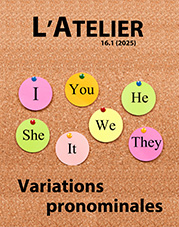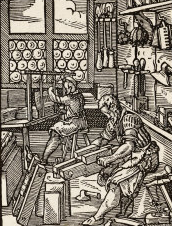Variations on the Second Person
Abstract
This article provides an overview of potential variations on the second person in diverse contexts of exploitation. Based on a model of possible references, I show that you narratives can play different tunes depending on the set of references that the pronoun draws on the model. I propose a few examples as illustrations. Returning to the etymology of the word “person”, I indicate the reasons why this pronoun is chosen over more traditional ones. Both a spokesperson-pronoun and a mask-pronoun, you is a theatrical pronoun, calling onto the reader as a co-participant to intensively relive the intimate scenes described by the character-narrator. To read a story written in you is to adopt an enactive approach that presupposes alignment or tuning in to the narrative voice in order to access the character's experiential perspective. The musicality of a second-person narrative resonates differently with each reader, but I show that for every type of you, secondary self-assignment effects are possible, revealing its powerfully interpersonal nature. Finally, the article concludes with a discussion of the listening mode that the second-person perspective encourages, using Citizen. An American Lyric (2014) by Claudia Rankine and Open Water (2021) by Caleb Azhuma Nelson as examples. I show how, via a decentring you giving voice to the intimacy of a lived experience, the works invite the reader to pay renewed attention to the force of racist prejudice.
Keywords: interpellation, enaction, personal pronoun, you, self-assignment, listening, inter-listening, attunement
Downloads
Published
Issue
Section
License
- Work submitted for publication must be original, previously unpublished, and not under consideration for publication elsewhere. If previously published figures, tables, or parts of text are to be included, the copyright-holder's permission must have been obtained prior to submission.
- Authors of accepted manuscripts will assign to L'Atelier the right to electronically distribute their article, or publish it in any form (Internet, CD ROM, printed copy) but authors will retain copyright and, after the article has appeared in L'Atelier, authors may republish their text (in print and/or electronic form) as long as they clearly acknowledge L'Atelier as the original publisher.


